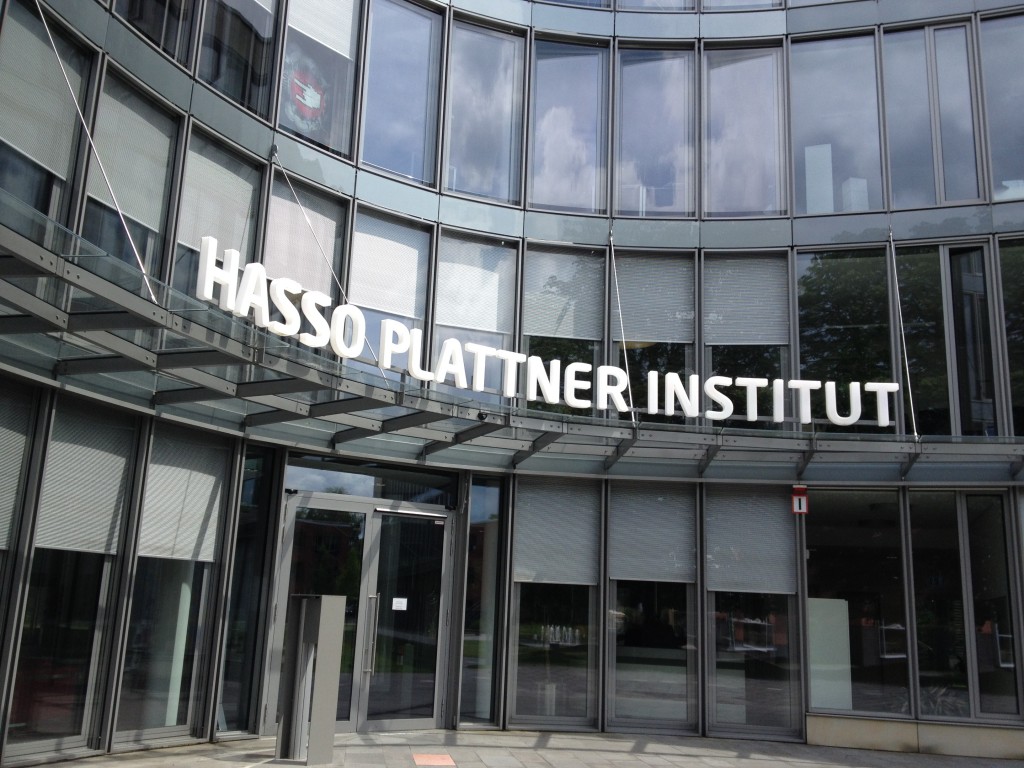The objective of the human computer interaction department at HPI is to unify the virtual world of the computer with the physical world of the user into a single space. During our visit we got a glimpse of a few projects they are working on. The most intriguing piece of technology they have is an interactive floor. One research project Dominik showed us is GravitySpace. GravitySpace is a new approach to tracking people and objects indoors. Unlike traditional solutions based on cameras, GravitySpace reconstructs scene data from a pressure-sensing floor. While the floor is limited to sensing objects in direct contact with the ground, GravitySpace reconstructs contents above the ground by first identifying objects based on their texture and then applying inverse kinematics.
 |
| A picture during our visit. This is the room below the interactive floor. |
 |
| GravitySpace recognizes people and objects. We use a mirror-metaphor to show how GravitySpace identifies users and tracks their location and poses, solely based on the pressure imprints they leave on the floor. |
“Smart rooms support users by offering not only a series of convenient functions, like home automation, but also by acting pro-actively on the user’s behalf. To this end, such rooms need to know their own geometry as well as the people and their actions within it.”
 |
| The GravitySpace prototype senses pressure at 1mm resolution and projects across an active area of 8 m² in a single seamless piece–a 10x larger version of multitoe. |
Check out this video of GravitySpace:
 |
| Fully immersive experience with motion feedback based on People |
